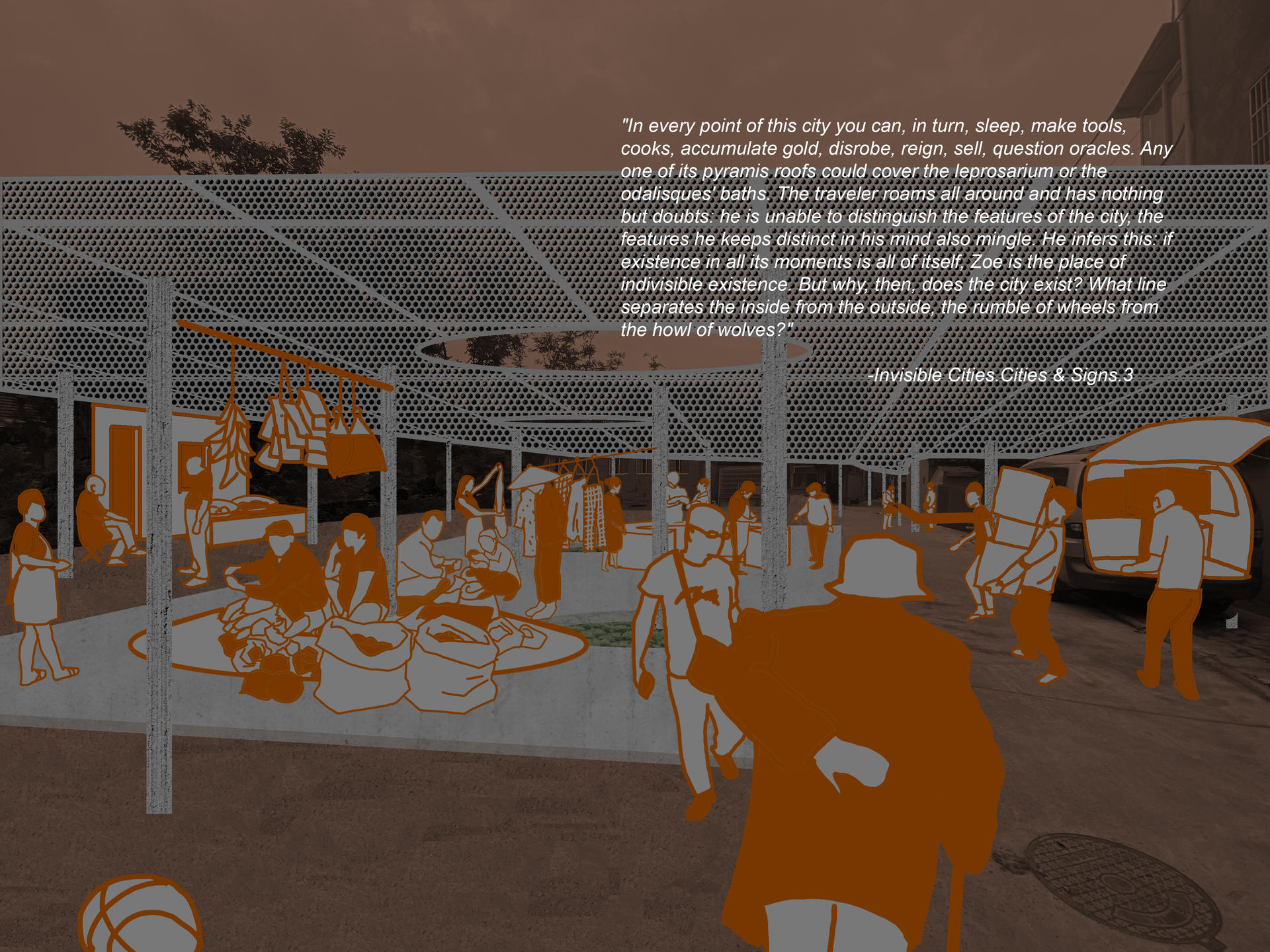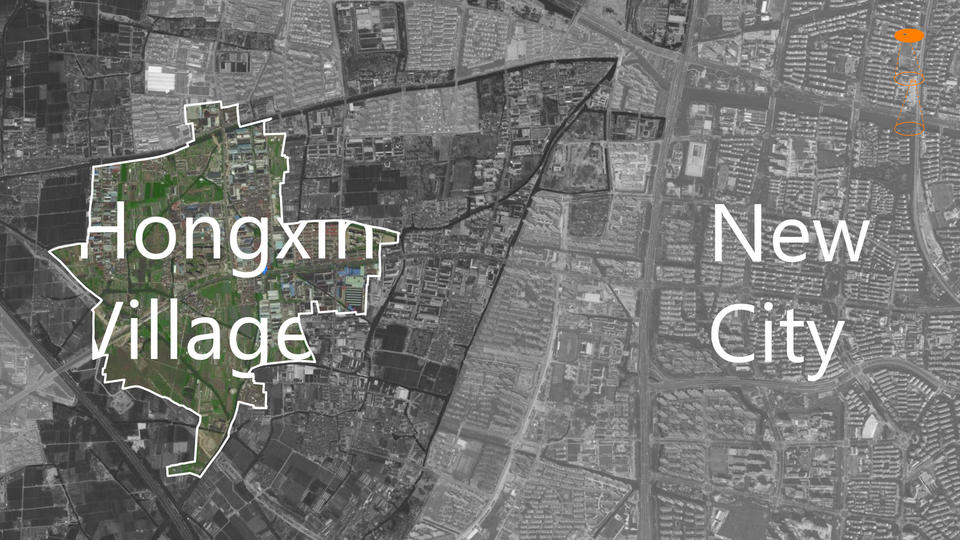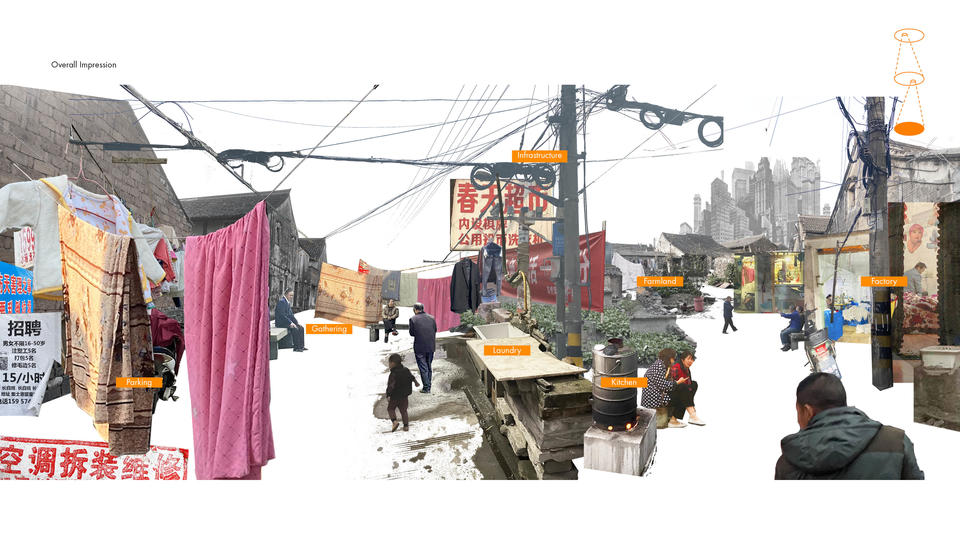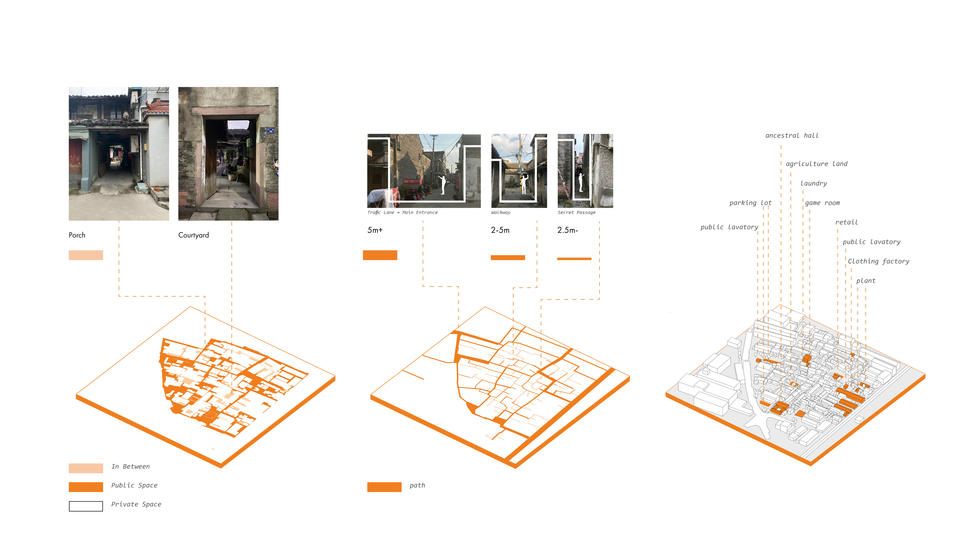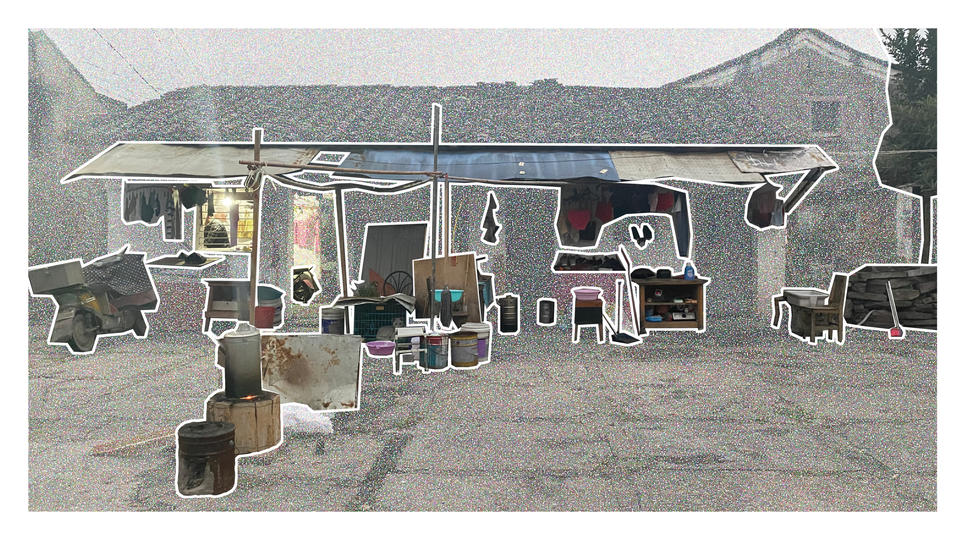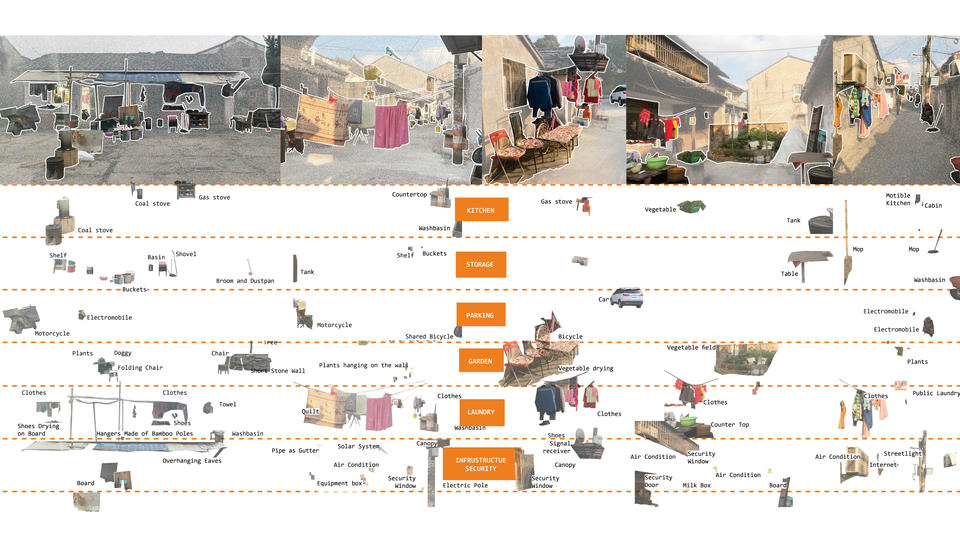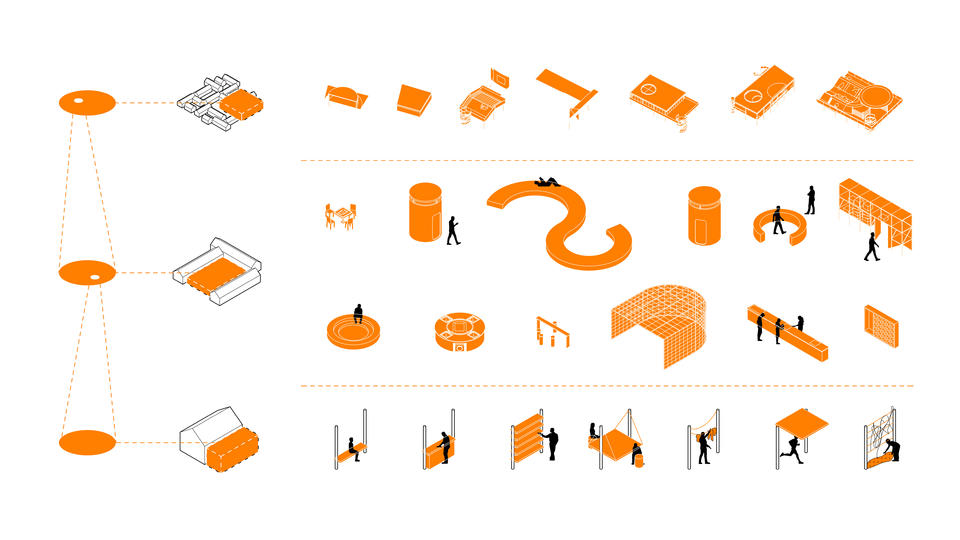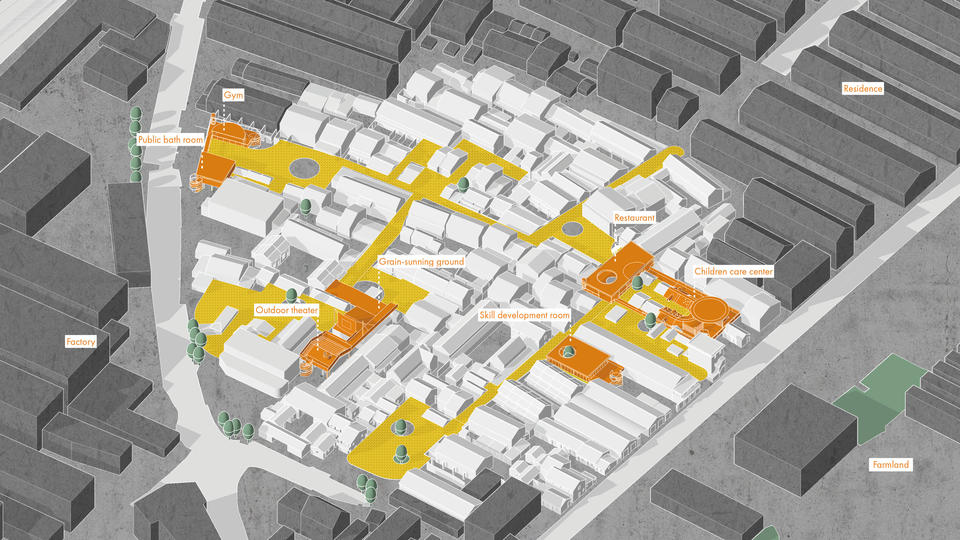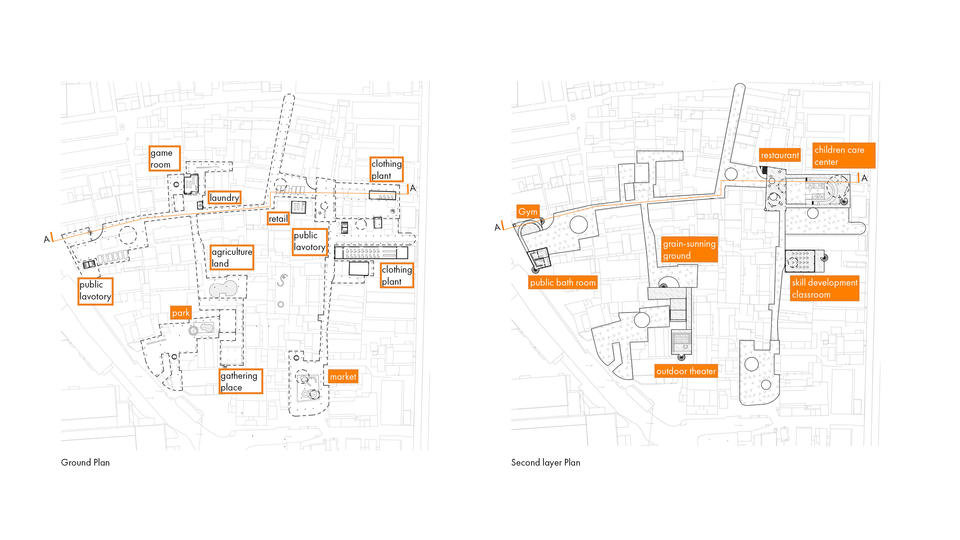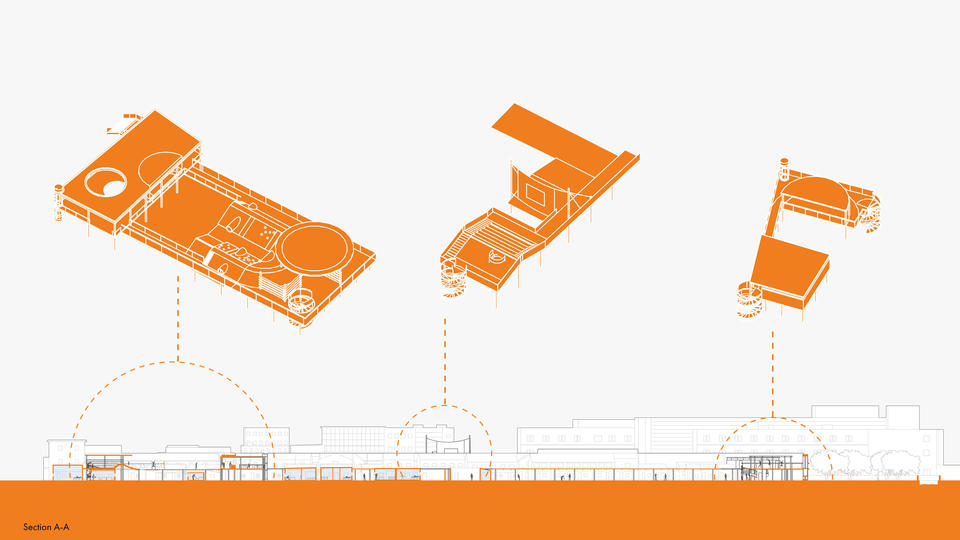Image
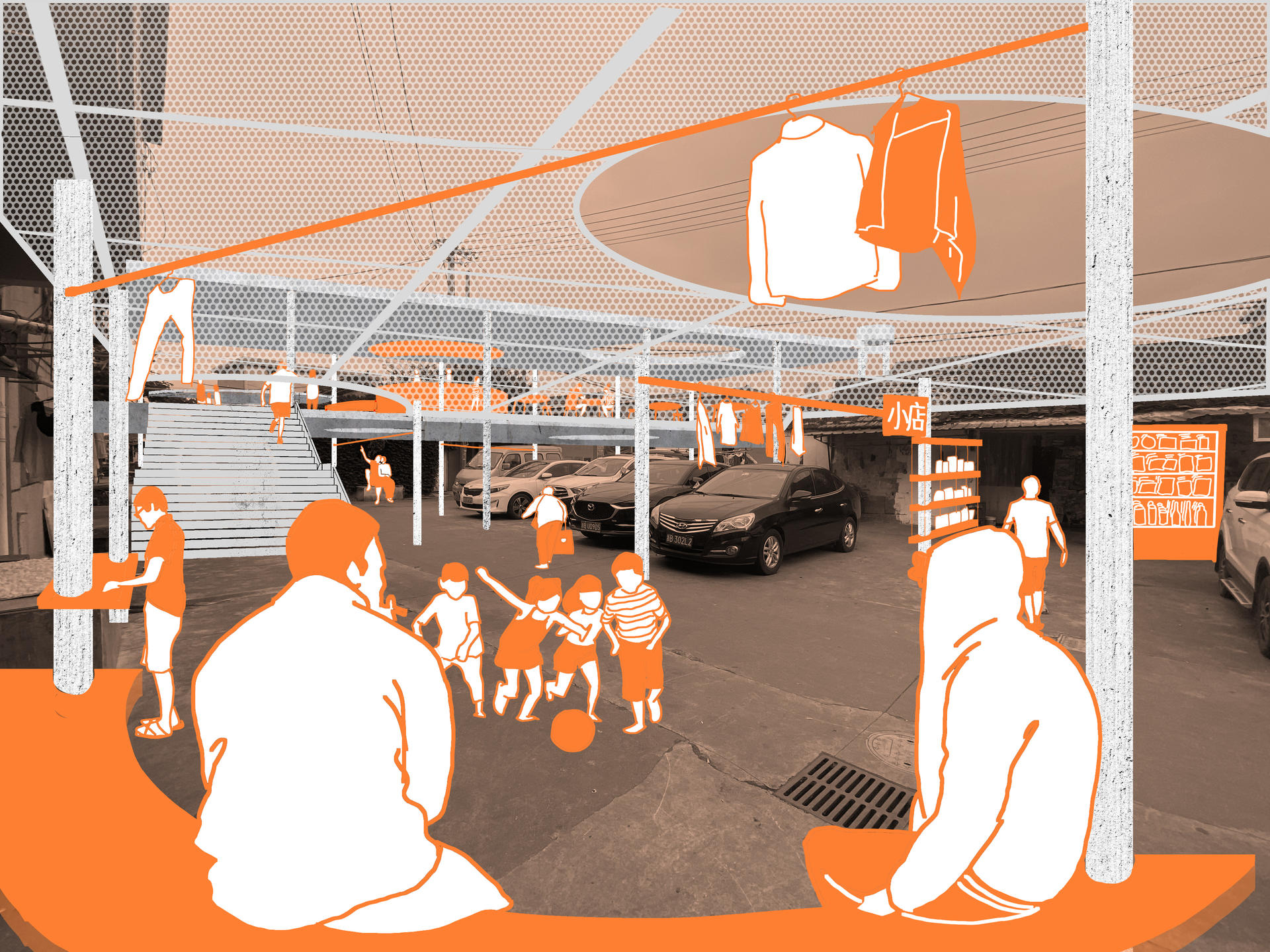
▲ Rendering shows the correlation between the canopy and the platform
ABSTRACT
Villages besieged by urban sprawl have been isolated and forgotten, broken from urban texture and social relationships. However, this kind of encirclement has no clear boundary and is entirely permeable. Infiltration and overflowing occur on various scales. On the urban scale, the old villages gradually abandoned the agricultural lifestyle and connected with the new industrial city. On the architectural scale, urban villages attempt to integrate with cities by imitating the urban façade wherever they come into contact along the fluid boundary. Some warehouses, small plants, and small workshops have appeared in urban villages. On the human scale, people's lives overflow from indoors to outdoors, into public space.
The village in the city and the amorphous culture it supports are negative in the eyes of the government, standing in the way of urban construction. It is the goal of local authorities to purge these communities in order to achieve unified management in urban governance. However, the bottom-up structures and installations overflowing in the public realm within the urban villages are a manifestation of pragmatism-oriented anarchy. In this 被遗忘的城市飞地 "forgotten urban enclave,” it is precise because of this "forgetting" that a community ecology full of life wisdom and vitality has been born: this is what a standardized city lacks. Is the current model of erasing the urban village and replacing it with a standardized urban fabric the optimal solution? Can a new urban model be proposed in a ruralized way based on retaining the original village texture and memory through adaptive reuse?
This thesis uses an ordinary urban village, Hongxin Village in Ningbo, an ordinary city in southeastern China, as a research sample and explores this question. In this typical urban village, the buildings, materials, and furniture in the space show the spontaneous appropriation, tampering, and renewal of the area since the city subsumed the village’s original mode of being. New spatial intervention methods respect the mutual ownership principles of the village and create a framework for the growth of neighborhood life; the framework will continue to use appropriation, tampering, and renewal of working methods to improve local life while preserving traditions of the village and creating more collective memories.
▲ Background information in three scale
Image

Concept
My concept is also demonstrated at the above three scales. At the urban scale, the square part means that the originally isolated village in the city can become a radiation center that connects the surroundings to create more collective memories. At the architectural scale, the overflowing of life caused by the limitation of indoor spaces blurs the boundary between the indoor and the outdoor and adds more freedom and fun to it. At the body scale, more bottom-up constructions have been made possible to achieve a high degree of self-adaptation and freedom for their behavior. Therefore, two words can be used to describe my concept. They are “overflowing” and “boundary”.
Design Strategy
In terms of design strategies, I classify the projects requiring improvements and the brand-new projects by the platform and canopy.
At the urban scale, new project will be located on the platform on second floor. At the architectural scale, some leftover spaces on the ground are utilized. Some designed furniture unit insert inside. At the body scale, the column network structure employed by the canopy and the platform becomes the principal structure for new construction to live in. The events happening inside are constructed by the residence. The latter two blur the boundary between the indoor and the outdoor through the coverage of the canopy.
Scene
Image
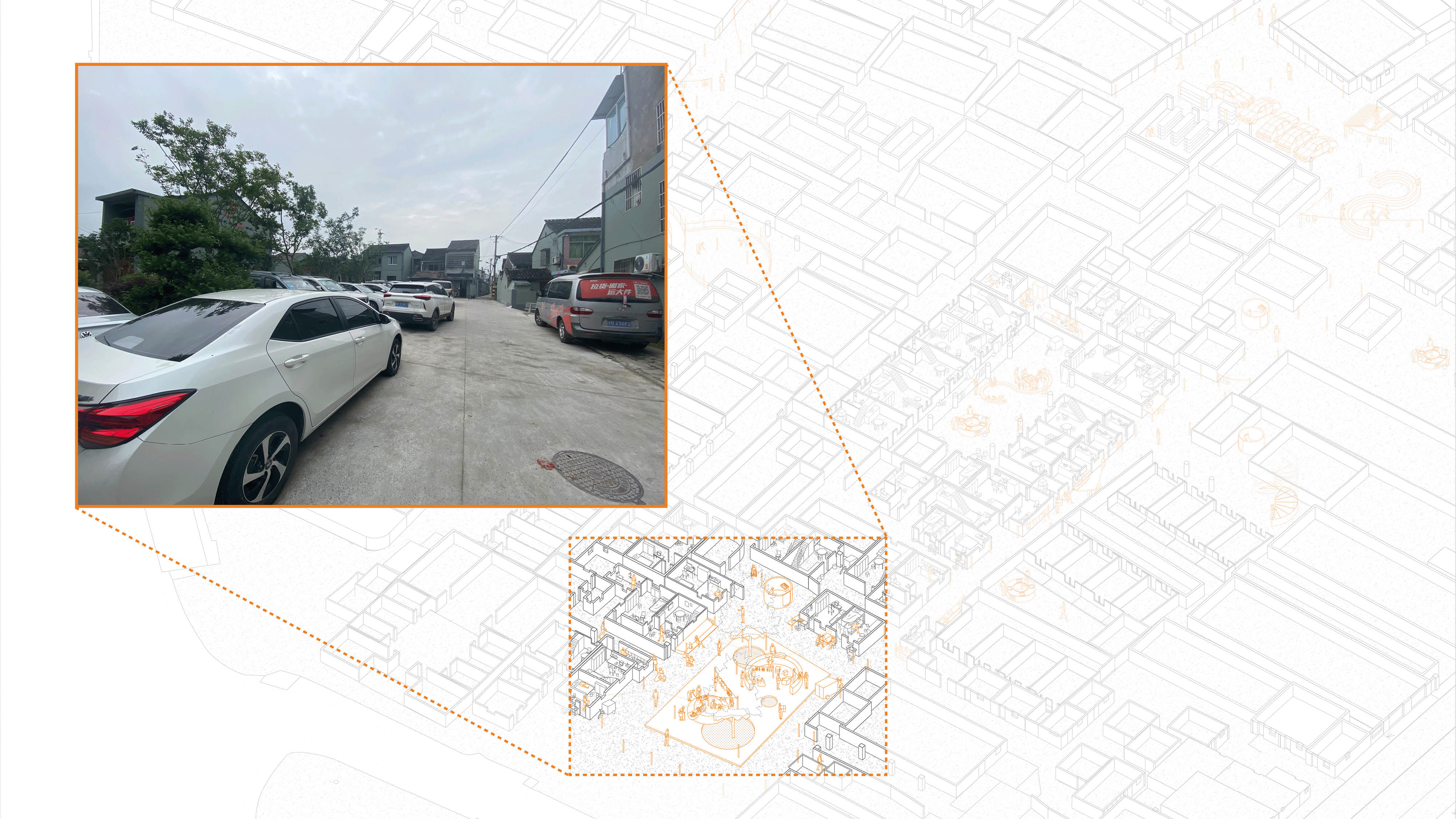
▲ In this large market area, the column network can be converted into the shelf for free display and hanging of commodities
Image

▲ Implanting of the park and the public kitchen.
Image

▲ The conception for a small-scale space, including the implanting of small-scale furniture and the transformation of the door-front space.
Image

▲ The correlation between the canopy and the platform. The platform will not change the ground life dramatically.
Image
